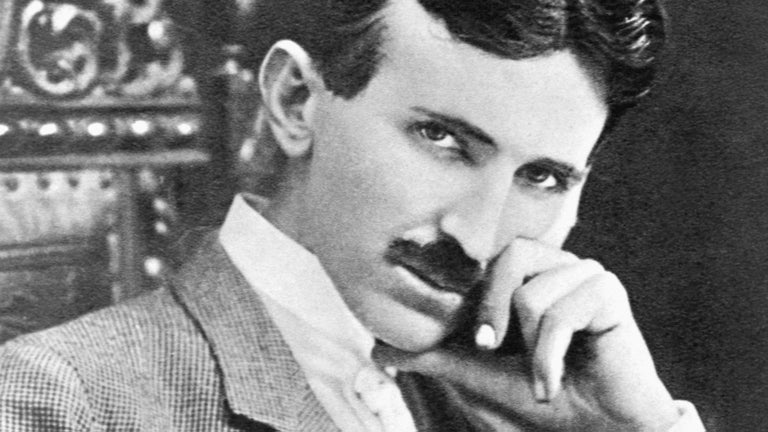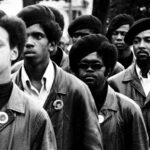Nikola Tesla was a Serbian-American inventor, best known for his contributions to the design of the modern alternating current (AC) electricity supply system and also for pioneering radio and wireless communication. He is considered by many the greatest inventor of all time. However, despite Tesla’s notable contribution to technology and humanity, he faded into obscurity and died alone and broke. Here is why?
Childhood
Nikola Tesla was born in the town of Smiljan in present-day Croatia on July 10, 1856. His father, Milutin Tesla was a priest of the Eastern Orthodox Church. His mother, Đuka Mandić had a talent for making home craft tools and mechanical appliances and the ability to memorize Serbian epic poems. Tesla credited his eidetic memory and creative abilities to his mother’s genetics and influence.
According to their family history, Tesla was born during a lightning storm and the midwife said halfway through the birth: this child will be a child of darkness, to which his mother replied, no, he will be a child of light.
Tesla attended primary school in Smiljan where he studied German, arithmetic, and religion. In 1862, the Tesla family moved to the town of Gospić, where Tesla’s father worked as a parish priest. Nikola completed primary school, followed by middle school. In 1870, Tesla moved to Karlovac to attend high school at the Higher Real Gymnasium.
While in High School, Tesla was able to perform integral calculus in his head, which prompted his teachers to believe that he was cheating. He finished a four-year term in three years, graduating in 1873. After graduation, Tesla’s father wanted him to become a priest but Tesla was interested in engineering. When he contracted cholera as a teen and nearly died, his father promised to send him to engineering school if he survived.
Higher Education
After surviving the deadly Cholera, Nikola Tesla went to study in Austria at the Technical College of Graz. He was said to have worked from 3 am until 11 pm every day. His Professors were worried that he would die from exhaustion.
He could perform calculus in his head and spoke eight languages. He was a good student at the start but would not finish school. Tesla dropped out and moved around Europe and eventually ended up in Budapest working as an electrician at a telephone company.
Tesla’s family did not hear from him after he left school. There was a rumour amongst his classmates that he had drowned in the nearby Mur River but one of them ran into Tesla in the town of Maribor in Slovenia and reported that encounter to Tesla’s family.
It turned out Tesla had been working there as a draftsman for 60 florins per month. In March 1879, Milutin finally located his son and tried to convince him to return home and take up his education in Prague. Tesla returned to Gospić later that month when he was deported for not having a residence permit.
In 1880, two of Tesla’s uncles put together enough money to help him leave Gospić for Prague, where he was to study. His father had died from an unspecified illness the previous year. He however arrived too late to register at the university.
Early Career
Nikola Tesla moved to Budapest, Hungary, in 1881 to work under Tivadar Puskás at a telegraph company, the Budapest Telephone Exchange. Upon arrival, Tesla realized that the company, then under construction, was not functional, so he worked as a draftsman in the Central Telegraph Office instead. Within a few months, the Budapest Telephone Exchange became functional, and Tesla was allocated the chief electrician position.
In 1882, Tivadar Puskás got Tesla another job in Paris with the Continental Edison Company. He started off installing indoor lighting but the managers noticed his talents and had him doing more complicated work, designing and building dynamos and motors. He was soon travelling throughout Europe fixing problems at other Edison branches.
Two years later, in 1884, Tesla’s manager offered him a job at Edison Machine Works in New York City. He agreed and migrated to America. As in Paris, Tesla was working on troubleshooting installations and improving generators. Historian W. Bernard Carlson notes Tesla may have met company founder Thomas Edison only a couple of times.
Tesla had been working at the Machine Works for a total of six months when he quit. What event precipitated his leaving is unclear. It may have been over a bonus he did not receive, either for redesigning generators or the shelved arc lighting system. Tesla had previous run-ins with the Edison company over unpaid bonuses he believed he had earned.
In his autobiography, Tesla stated the manager of the Edison Machine Works offered a $50,000 bonus to design “twenty-four different types of standard machines” “but it turned out to be a practical joke”.
Read More:
- 5 Smartest Criminal Masterminds In History.
- History, Ideology, and Impact of the Black Panther Party.
- Craig Price: The Youngest Serial killer In the History of The United States
Nikola Tesla VS Thomas Edison
Nikola Tesla initially had a good impression of Thomas Edison. Edison was also impressed by Tesla, later saying: “I have had many hard-working assistants but you take the cake.” However, this mutual admiration didn’t last long.
The two men disagreed over how electricity should be contained and delivered. Edison preferred direct current which is a system where the electric charge only flows in one direction. Tesla was a fan of alternating current in which the electric charge changes direction periodically. This means it can provide more power and transmit power over longer distances. But Edison didn’t care about AC because it could have hurt the sales of direct current since he owned all the patents for DC.
An account of the story has Edison telling Tesla: “You don’t understand our American humour.” Regardless of how it played out, Tesla quit and set off to form his own electric company the following year in 1885. But his investors showed little interest and decided to take the company and all of Tesla’s patents which they could do because Tesla had assigned the patents to the company in exchange for stock which was now worthless. After losing his company, Tesla had to take a job digging ditches for two dollars a day just to survive.
Career Success
In 1887, Nikola Tesla invented an induction motor that ran on alternating current. The motor was the most efficient way to convert electricity to mechanical power. He patented the motor and showed it off the following year at the American Institute of Electrical Engineers.
This caught the attention of George Westinghouse, a major player in the electric market who realized Tesla’s AC motor might just be what he needed to complete his alternating current system and compete against Edison’s DC system. So Tesla licensed the patents for the AC motor to Westinghouse for $60,000 and also received stock and royalties.
Westinghouse hired him as a consultant for $2,000 a month and the war of the currents began. Edison tried hard to try to discredit Westinghouse and Tesla. He secretly financed the electric chair that used alternating currents to prove how dangerous AC was. Edison’s company also publicly tortured animals to prove its point.
Despite Edison’s schemes, Westinghouse and Tesla continue to attain numerous achievements. They underbid Edison’s General Electric to illuminate the World’s Colombian Exposition in Chicago in 1893. The first all-electric fair celebrated the 400th anniversary of Christopher Columbus’s discovery of America. It was clear to the 27 million people who attended that AC would power the future.
Their success continued when they beat out Edison’s General Electric again to build the world’s first alternating current power plant in Niagara Falls. The hydroelectric power station was a massive success and helped light up Buffalo, New York. Westinghouse and Tesla won the war of the currents and direct current was being phased out.
Westinghouse Decline
Westinghouse’s company was running out of money and eventually went $10 million into debt. In 1897, he went to Tesla and asked if his royalties could be reduced in a desperate attempt to save the company. Tesla was so compelled by compassion for his friend that he ripped up his contract. He was grateful to Westinghouse for believing in him when no one else would. Tesla willingly walked away from $12 million in royalties
In return, Westinghouse paid Tesla $216,000 for the rights to use his AC patents forever. With that money, Tesla became financially independent and set up a series of laboratories in New York for new projects. This was his period of many inventions.
Nikola Tesla held over 300 patents in his lifetime. He created an early version of neon lighting, the Tesla turbine — a bladeless turbine for vehicles. He pioneered X-ray technology by experimenting with radiation. Another stand-out invention was one of the first remote controls. In 1898, he controlled a miniature boat at Madison Square Garden in New York. It was so far ahead of its time that the crowd thought he was using magic to make it move.
One of his most well-known inventions is the Tesla coil — a device that can produce large amounts of high-voltage electricity. Because of the coils, he discovered he could send and receive powerful radio signals when they resonated at the same frequency. Tesla was preparing to broadcast his first radio signal but a fire destroyed his lab in 1895. He lost years of research and equipment. Tesla didn’t apply for a patent for the radio until two years later.
The Decline of Nikola Tesla
The fire would be the turning point in his life that led to a downhill spiral. At the same time that he was working on radio, an Italian entrepreneur, Guglielmo Marconi, was also working on the radio in England. He tried to acquire patent rights in the US but was turned down because it was too similar to Teslas.
However, things changed when Marconi was able to send the world’s first transatlantic radio message in 1901 using 17 of Tesla’s patents. Edison then threw his financial support behind Marconi. Tesla had no problem with Marconi’s achievements but in 1904, the US Patent Office suddenly changed its mind and awarded Marconi a patent for the invention of the radio. Many attributes this decision to Edison’s financial backing of Marconi
Marconi went on to win the Nobel Prize in Physics in 1911 which was only possible due to Tesla’s work. Tesla was furious and sued Marconi. The case dragged on in court for years and was only settled in Tesla’s favour after his death.
That radio incident negatively impacted the rest of Tesla’s career. For example, Tesla was obsessed with bringing wireless communication to the world and built a huge wireless transmission station in Long Island, New York called Wardenclyffe Tower. He imagined a world where we could send and receive messages wirelessly.
But financial backers did not have enough faith in his project. They pulled out and banked on Marconi’s radio invention instead. This left Tesla in financial ruin. He had no choice but to abandon his dream project in 1905 and eventually lost Wardenclyffe Tower to foreclosure.
Tesla’s mental health deteriorated. He lived his last decade in the New Yorker Hotel. He lived off a diet of warm milk and crackers and was obsessed with feeding the pigeons outside. Following rumours of his deteriorating living condition, Westinghouse Corporation hired him as a consultant and paid for his room. He lived rent-free but died in debt.





